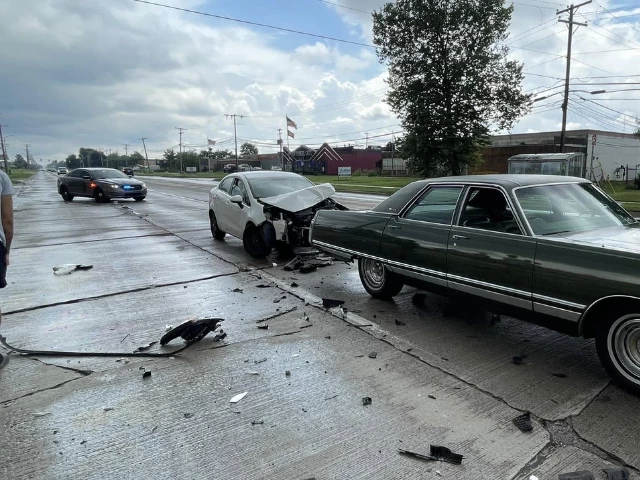1973 Chrysler New Yorker vs. Modern Car Safety: A Viral Debate Ignites

Did you know that the vintage cars of yesteryear are stirring up a modern debate on safety standards? A recent incident involving a classic 1973 Chrysler New Yorker has sparked a fiery discussion online about whether older vehicles can truly hold their own against contemporary designs when it comes to safety.
The event unfolded in Michigan when the owner of the Chrysler shared that their beloved vintage vehicle sustained only minimal damage after being rear-ended by a newer model. This seemingly innocuous fender bender quickly caught the attention of many, leading to a viral conversation about the safety of older versus newer cars. Enthusiasts of classic cars rallied around the Chrysler, praising its robust steel frame and asserting that it’s a testament to how vehicles were built to last back in the day.
One nostalgic commenter, embodying the spirit of many in the thread, remarked, “Cars were simply built better back then.” This perspective resonates with a generation that fondly remembers the heavy, solid feel of classic cars — a much different experience than today’s lighter, more fuel-efficient models.
However, not everyone agreed. Automotive safety experts weighed in with a counter-narrative, explaining that modern vehicles are meticulously designed with crumple zones that absorb collision energy. These zones not only protect the car but ultimately prioritize the safety of those inside, drastically reducing the force transmitted to occupants in the event of a crash. In fact, this design evolution aims to save lives, even if it means the car may look worse for wear after an accident.
As the debate heated up online, some users expressed concern over the perspective that a lack of visible damage was a good sign. One user pointedly noted, “Y’all realize it’s the driver who absorbs the crash if the car doesn’t.” This comment highlights a crucial point: the well-being of the driver and passengers outweighs the car's external appearance.
Critics of the older Chrysler underscored the absence of modern safety staples such as airbags, anti-lock brakes, and reinforced cabin structures. While the 1973 model may have weathered this collision relatively well, experts stressed that in the face of high-speed collisions, passenger safety would likely be compromised when compared to today’s vehicles.
This incident serves as a reminder of how automotive engineering has evolved dramatically. The focus has shifted from merely preserving the car's structure to ensuring the protection of its occupants. As this viral discussion continues, safety professionals urge everyone to recognize that the condition of a vehicle after a crash doesn’t necessarily reflect its safety performance. The bottom line? Modern cars are engineered with one priority in mind: keeping the people inside safe.



























